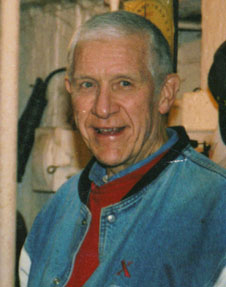The Musings of a Simple Country Man
The 20th century was the cruelest, harshest century in history. –Paul Hawkens, Blessed Unrest
(Brookfield, NY – Nov. 2014) The letter arrived in the Leonardsville Post Office in 1919. It was written in beautifully cursive French and came from a French hotel proprietor named J. Armad, who lived in Vals-les-Bains in Ardeche. It was addressed to Ocran and Cora Saunders.
The letter began: “Chere Madam, It is a mother who is writing to you, a mother who has been with your dear child in his last days; and it seemed to me that to tell you a little of his last acts and gestures may soften the bitterness of your grief.”
The Saunders’ son Carl, a 22 year old farm boy from Leonardsville, had died in France during his service with the American Expeditionary Force after the end of World War I. Today the Saunders family is reunited and are buried in the tiny Leonardsville cemetery at the edge of this small Madison County village.
Carl Saunders was one of 20 million who died in World War I and another 30 million who died around the world from the deadly flu unleashed by that war. A war that not many knew why it had happened at all.A war that planted the seed of an even bloodier war 21 years later. In that war one person died every three seconds for six years.
Carl Saunders was a handsome young farm boy from this community. In 1917 he was a promising baseball pitcher at nearby Colgate University. When the US entered the war in 1917 Carl enlisted and was eventually sent to Europe, where he was assigned to the 310th Infantry Regiment Band as a coronet player. He was not spared however the horrors of the horrendously bloody trench warfare. He served as a stretcher bearer picking up the dead during night time ceasefires. At one point a German shell knocked him off a truck, seriously injuring his spine. But finally on the 11th hour, 11th day and 11th month, 1918, the “war to end all wars” was over.
The band members spent a few days at a hotel in Vals-les-Bains, run by J. Armad and her husband. Some of the American soldiers were ill with the flu but soon recovered. J. Armad noticed another with blond hair and she called him by that hair color, not knowing his real name was Carl. Unfortunately Carl’s physical condition, stemming from his injured spine, deteriorated quickly. Possibly having spinal meningitis, a doctor was summoned and found young Saunders in grave condition. He was taken to a hospital in Montelimar.
Armad would write in her 1919 letter that Carl’s friends were “admirably devoted and cared for him as no nurse would have done; he was for them a little brother whom they petted and spoiled to quiet his pain. He was never left alone, day or night, and when they saw him depart [to the hospital] they wept like children.”
Armad and her husband visited Carl before his death in the hospital. As she wrote, “an hour before he left my husband and I went to see him and kissed his forehead in his mother’s name.” Armad cut off a lock of his hair as a last remembrance.
The little blond had been buried at the Vals-les-Bains cemetery. Armad would write Cora Saunders that “when I go to see the graves of my own family, I assure you, Madam, that he will have a visit for his mother’s sake.” A few years later Carl Saunders’ remains were exhumed and reburied at the Leonardsville cemetery next to his mother and father. His father probably dying of a broken heart a year after his son, and his mother passing away in 1946, with the treasured letter from J. Armad always close to her heart.
In the starkness and beauty of early November, the stillness of the Leonardsville cemetery speaks volumes of peace and a reunited family.
Hobie Morris is a Brookfield resident and simple country man.


